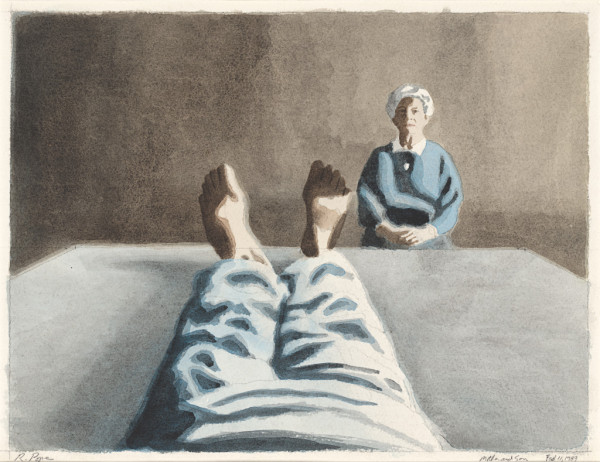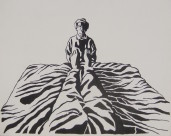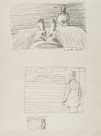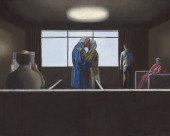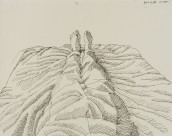Robert recreates a moment from his 1986 cancer treatment at St. Margaret’s Hospital in Toronto. His mother Isabel accompanied him on this trip as moral support and also to cook his Macrobiotic meals. Isabel looks on concerned, but she is also calm and enduring. She is a resilient anchor to the weightless dreamy aspect of the patient, from whose point-of-view the image is seen. After drawing several pages of strangers in waiting rooms, Robert creates this deeply personal image and adopts an original approach by showing the patient’s experience from the patient’s point of view. By including his own outstretched legs and feet, drawn in sharp perspective, Robert creates a disconcerting effect of being half-present and half-absent.
The headless torso enters the realm of surrealism, as well as touching on what Freud termed das unheimlich, “the uncanny,” a condition encountered in life and art where the familiar becomes strange. In his essay, The Uncanny, 1919, Freud tells us that “the uncanny begins at home.” It is a “wishful fear” and a “return” that has to do with “seeing and failing to see.” The uncanny presents “what was meant to be secret but has come into the open.” The inference Freud draws from the many examples of the uncanny he records is that “a dark and hostile power is not outside, but inside ourselves.” Surely this is a fitting description of cancer.
The headless torso also introduces one of the most important of Robert’s themes in the cancer series, the loss of personality that the patient experiences.
